Easier Coastal Prevention and Responses to Large-Scale Marine Pollution Incidents
▶ KRISO develops amphibious oil removal equipment for cleaning up large-scale onshore and shoreline oil spills
▶ Minimizing marine pollution damage by quickly and effectively responding to marine oil spills
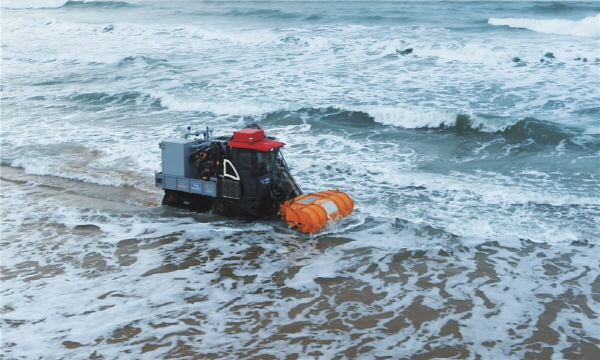
< Driving performance test of the prototype for large-scale coastal and shoreline-adhered oil spill recovery equipment (Mallipo beach, Taean) >
□ It has now become possible to respond more quickly and effectively at coastal shorelines during events of expansive marine pollution incidents.
□ The Korea Research Institute of Ships & Ocean Engineering (President Hong Key Yong, hereafter “KRISO”) announced that it will be holding a demonstration of its amphibious recovery equipment on May 24th. The newly developed recovery device can easily maneuver across the coastline to quickly remove and recover spilled oil during events of major offshore oil spills.
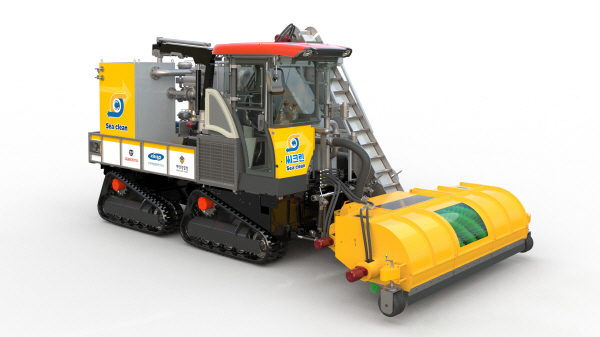
< Schematic exterior of the prototype for large-scale coastal and shoreline-adhered oil spill recovery equipment >
□ Over the last 5 years, an average of 258 large and small oil spill incidents occurred annually in Korea. When the spilled oil is washed onto the shore, it adheres to gravel or sand, making the response and clean-up even more challenging. Coastal clean up and prevention responses require much manpower and time. If the oil spills require longer time for cleanup, the environmental pollution will likely become more severe and serious as the oil seep into the ground.
□ Considering these marine pollution incident characteristics, KRISO has developed amphibious recovery equipment that can quickly remove the thick layer of oil waving towards the coasts and those that have adhered to the shorelines.
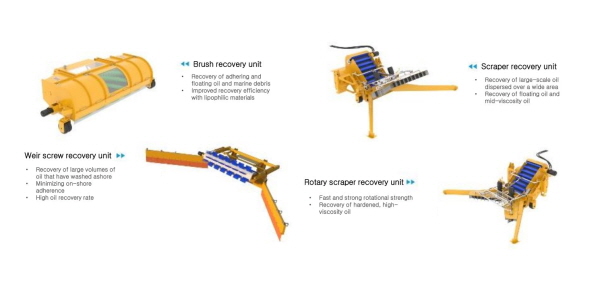
< Detachable floating and adhered oil recovery unit: 4 types >
□ The developed equipment consists of a caterpillar track that can operate on shallow sea waters, sandy beaches, and gravel fields, as well as four types of detachable recovery units to ensure adequate response and cleanup operation for different oil types, climate conditions, and water depths.
* Detachable recovery units: brush recovery unit, weir screw recovery unit, scraper recovery unit, and rotary scraper recovery unit
□ The oil recovery equipment boasts an operational performance of more than 20 m3/h (for in shore) and 2,000 m2/h (for shore adherence), at least 50 times faster than manual human labor. It also doesn’t generate secondary waste, such as used oil-abosorption pads that are used to wipe off oil that has adhered to the shoreline. Furthermore, the machine is equipped with a heating device to allow the recovery of high-viscosity oil, which enables seamless cleanup work even during the winter season.
□ Lead researcher Choi Hyuk-jin at KRISO commented, “KRISO will continue to develop various prevention and response equipment, including small manned and unmanned units, by leveraging on the source technology secured during the development of the latest amphibious recovery equipment, and will largely contribute to the revitalization of the related industries by transferring the technology to the private sector.”
□ Representatives from relevant institutions, including the Korea Coast Guard and Korea Maritime Environment Management Corporation, will take part in the demonstration event. The event is expected to demonstrate key features of the amphibious recovery equipment prototype, including the recovery of oil that has washed onshore or which has adhered to the shoreline, as well as its driving performance on soft coastal grounds.
□ KRISO President Hong Key Yong explained, “Oil spillage at sea can spread quickly due to rapid currents and winds, where the damages can be severe. We expect that the newly developed amphibious recovery device can help us perform quick and effective response and cleanup actions on the coast during events of large-scale oil spills.” He also promised that “KRISO will continue to lead the development of core technologies that can safeguard the lives and safety of the people and the marine environment.”
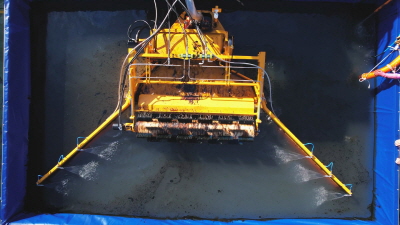
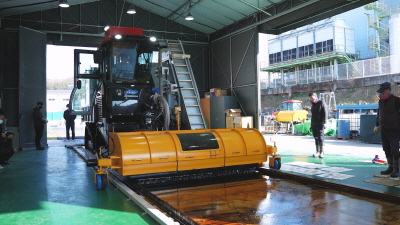
< Oil recovery performance tests: adhered oil (left) & floating oil (right) >

 Research Project
{{data.S ? data.S.sum : 0}}
Research Project
{{data.S ? data.S.sum : 0}}

 Patent
{{data.P ? data.P.sum : 0}}
Patent
{{data.P ? data.P.sum : 0}}

 Technology Transfer
{{data.T ? data.T.sum : 0}}
Technology Transfer
{{data.T ? data.T.sum : 0}}

 Thesis
{{data.R ? data.R.sum : 0}}
Thesis
{{data.R ? data.R.sum : 0}}














